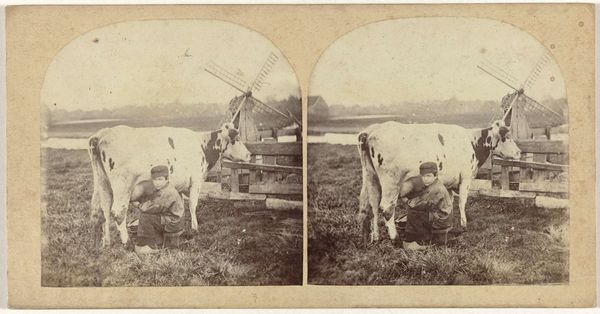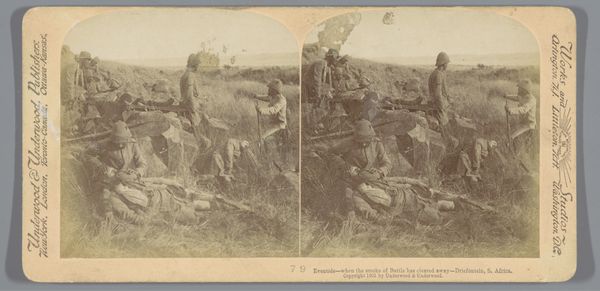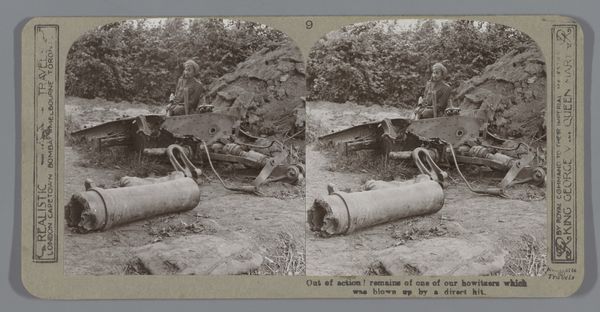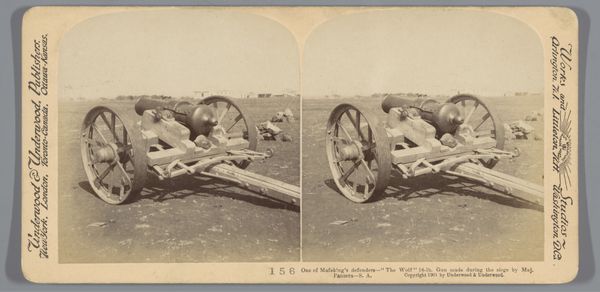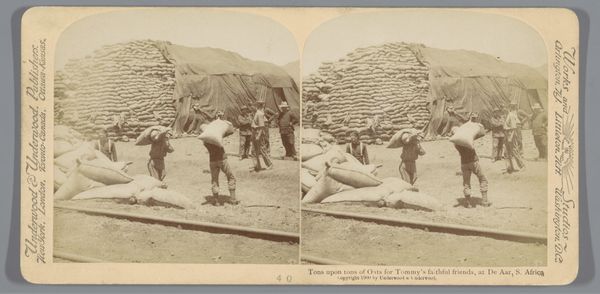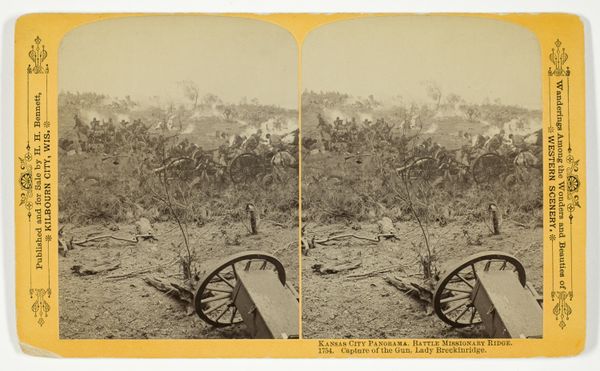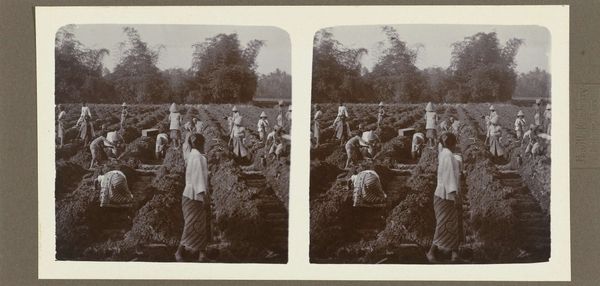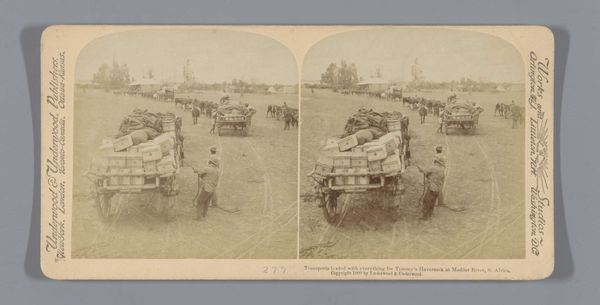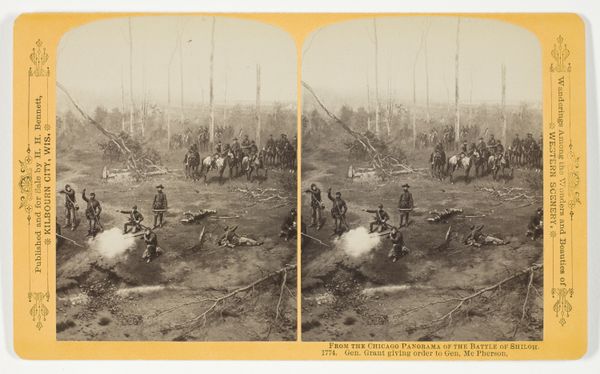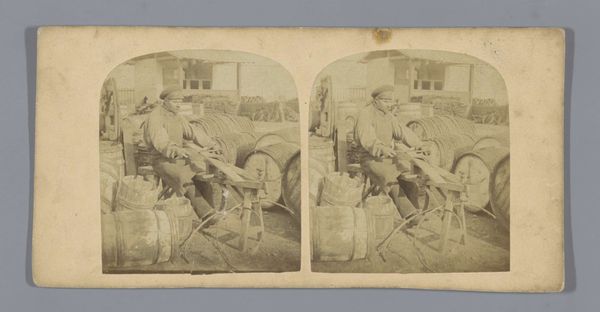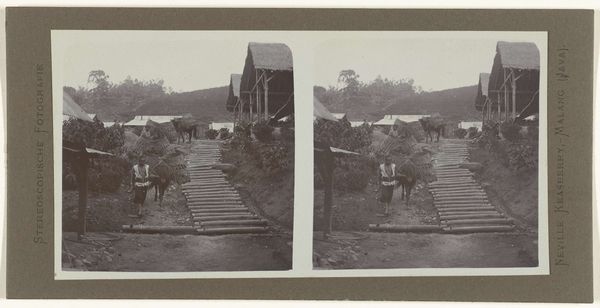
photography
#
portrait
#
war
#
landscape
#
photography
#
coloured pencil
Dimensions: height 87 mm, width 176 mm
Copyright: Rijks Museum: Open Domain
Curator: My first impression? The sheer weight of those mortars... it’s not just physical, it’s the weight of history, isn’t it? Like a monument to something very… heavy. Editor: Indeed. This striking image, taken sometime between 1863 and 1894 by George Barker, showcases captured Mexican cannons at West Point, New York. It offers a complex lens through which to examine the spoils of war, their symbolic value, and the lasting imprint of conflict. Curator: Spoils of war, precisely! Placed so serenely, almost casually, in a park landscape. I wonder about the original intention… like, “Let’s just leave these instruments of destruction amongst the trees, as if they sprouted from the earth.” Editor: I see that. Consider the context. These cannons are trophies, meant to signify victory and dominance, specifically linked to the Mexican-American War of 1846-1848. Their presence at West Point, a site dedicated to military education and national identity, reinforces the narrative of American expansionism and martial prowess. They are a declaration! Curator: But do they shout? To me, they whisper… “Remember, remember…” But remember what? The glory? Or the cost? Look how weathered they are, fading… time does its thing, softens even iron, it seems. Editor: Exactly. It is the selective framing of history that becomes troubling. Barker’s composition highlights this tension between aestheticized landscape and the underlying narrative of conquest. The very act of display raises questions about collective memory and national identity, particularly as they relate to marginalized or conquered populations. It subtly celebrates US supremacy, whitewashing all associated brutalities. Curator: So, are we simply admiring cannons or… Editor: Or questioning whose narrative this park, this photograph, upholds? Are these monuments symbols of patriotism, or glaring reminders of aggressive expansion and injustice? The photograph urges us to consider whose stories are privileged, and who pays the unacknowledged price. Curator: It seems a simple landscape photograph, at first glance. But the closer you look, the deeper it gets. Heavy, yes, just like the cannons themselves. Editor: Absolutely, revealing how objects and images can become sites of historical contestation. Barker’s work compels us to engage critically with the visual landscape around us, to excavate hidden meanings, and to reckon with the ongoing legacies of historical violence and political domination.
Comments
No comments
Be the first to comment and join the conversation on the ultimate creative platform.
